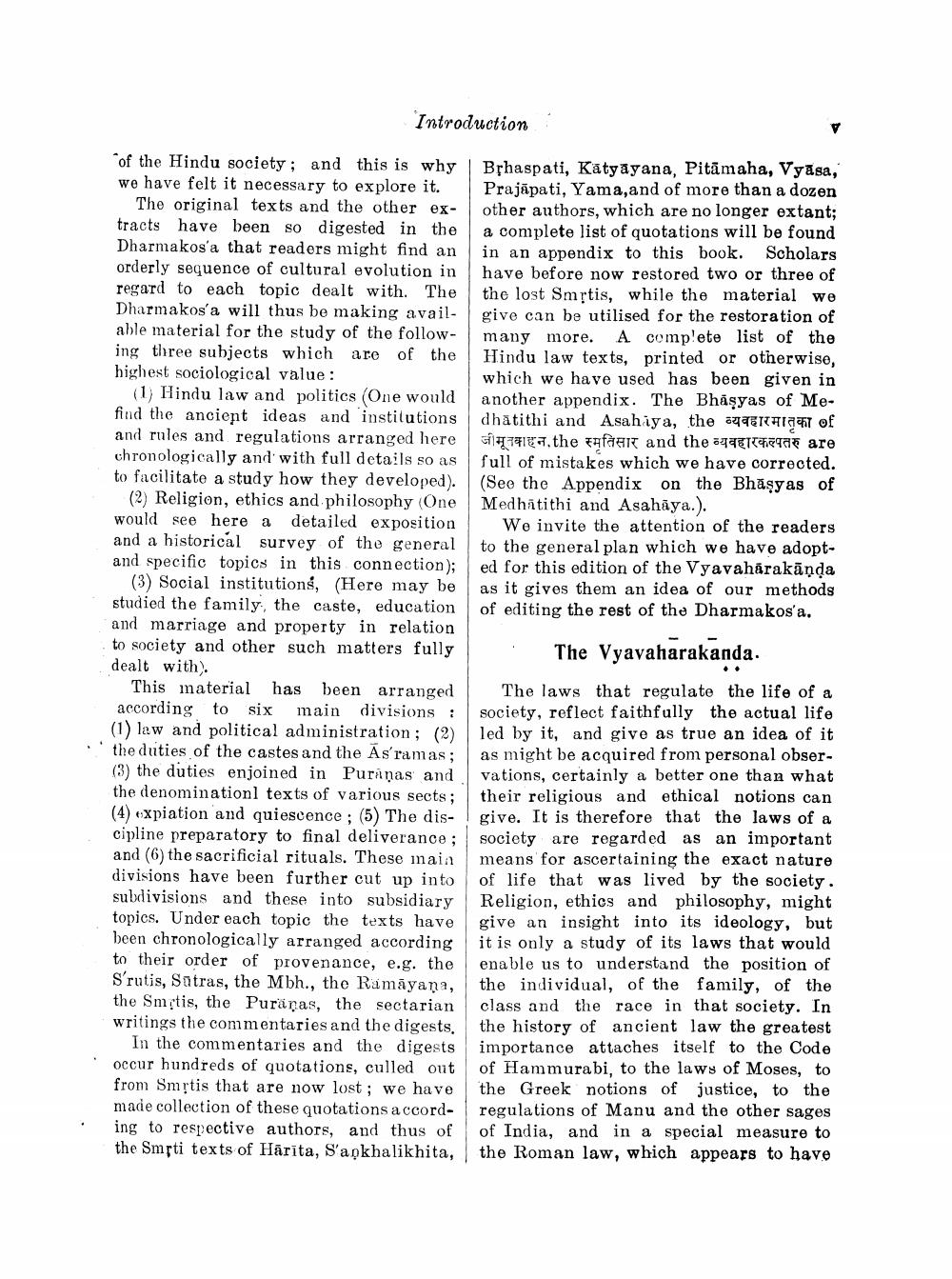________________
Introduction
of the Hindu society; and this is why | Brhaspati, Katyayana, Pitamaha, Vyasa, we have felt it necessary to explore it. Prajapati, Yama,and of more than a dozen
The original texts and the other ex- other authors, which are no longer extant; tracts have been so digested in the a complete list of quotations will be found Dharmakos'a that readers might find an in an appendix to this book. Scholars orderly sequence of cultural evolution in have before now restored two or three of regard to each topic dealt with. The the lost Smộtis, while the material we Dharmakos'a will thus be making avail- give can be utilised for the restoration of able material for the study of the follow- many more. A complete list of the ing three subjects which are of the Hindu law texts, printed or otherwise, highest sociological value:
which we have used has been given in (1) Hindu law and politics (One would another appendix. The Bhăşyas of Mefind the ancient ideas and institutions dhatithi and Asahiya, the ER 139 of and rules and regulations arranged here 74102, the shfaent and the fact tax are chronologically and with full details so as full of mistakes which we have corrected. to facilitate a study how they developed). (See the Appendix on the Bhāşyas of
(2) Religion, ethics and philosophy (One | Medhatithi and Asahāya.). would see here a detailed exposition We invite the attention of the readers and a historical survey of the general to the general plan which we have adoptand specific topics in this connection); ed for this edition of the Vyavahārakāņda
(3) Social institutions, (Here may be | as it gives them an idea of our methods studied the family, the caste, education of editing the rest of the Dharmakos'a. and marriage and property in relation to society and other such matters fully . The Vyavaharakanda. dealt with
This material has been arranged The laws that regulate the life of a according to six main divisions : society, reflect faithfully the actual life (1) law and political administration ; (2) led by it, and give as true an idea of it the duties of the castes and the Asramas; as might be acquired from personal obser(3) the duties enjoined in Puranas andvations, certainly a better one than what the denominationl texts of various sects; their religious and ethical notions can (4) expiation and quiescence: (5) The dis- give. It is therefore that the laws of a cipline preparatory to final deliverance ; society are regarded as an important and (6) the sacrificial rituals. These inaia means for ascertaining the exact nature divisions have been further cut up into of life that was lived by the society. subdivisions and these into subsidiary Religion, ethics and philosophy, might topics. Under each topic the texts have give an insight into its ideology, but been chronologically arranged according it is only a study of its laws that would to their order of provenance, e.g. the enable us to understand the position of S'rutis, Satras, the Mbh., the Ramāyana, the individual, of the family, of the the Smetis, the Puranas, the sectarian class and the race in that society. In writings the commentaries and the digests the history of ancient law the greatest
In the commentaries and the digests importance attaches itself to the Code occur hundreds of quotations, culled out of Hammurabi, to the laws of Moses, to from Smộtis that are now lost; we have the Greek notions of justice, to the made collection of these quotations accord- regulations of Manu and the other sages ing to respective authors, and thus of of India, and in a special measure to the Smsti texts of Hārīta, S'apkhalikhita, the Roman law, which appears to have




